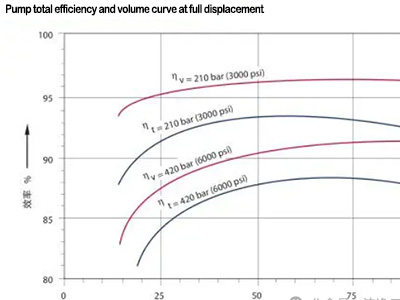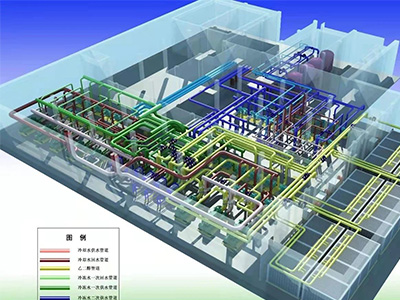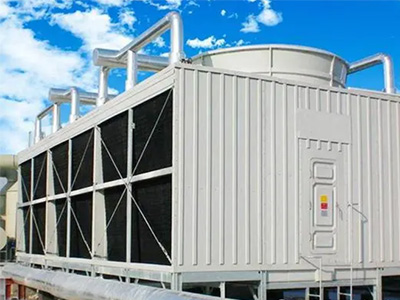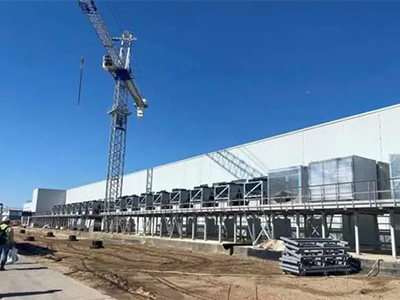COMPANY NEWS
Ten tips for energy saving in clean rooms
There are numerous cleanroom areas where energy can be saved, such as heating, ventilation, air conditioning (HVAC), process cooling, compressed air, and other facilities. Below are ten tips for addressing energy efficiency in new and existing facilities that provide proven technology with minimal risk, low or no cost, and an attractive payback period.
1. Low-section wind speed design
The cross-sectional air velocity is the speed at which air passes through the filter or heating/cooling coil in the air handling unit. Low cross-sectional air velocity (LFV) design uses larger air handlers and smaller fans, which reduces air velocity, energy consumption and equipment life cost. Most engineers design air handlers for 500 inches per minute based on "rule of thumb". Although this design saves time, it increases operating expenses. In low cross-sectional air velocity (LFV) design, larger air handlers and smaller fans are used, which reduces air velocity, energy consumption and equipment life cost. Pressure drop determines the energy loss of the fan. The "square rule" shows that pressure drop is proportional to the square of the speed drop. If the cross-sectional air velocity decreases by 20%, the pressure drop will decrease by 36%; if the cross-sectional air velocity decreases by 50%, the pressure drop will decrease by three-quarters. According to the "cubic rule", the change in fan energy consumption is proportional to the cube of the change in flow rate. If the air flow rate decreases by 50%, the fan energy consumption will decrease by 88%. Therefore, larger air handlers, larger filters and coil areas consume less fan energy, allowing smaller fans and motors to be used. Small fans add less heat to the air, making cooling easier. Thinner coils are easier to clean and work more efficiently, so chilled water temperatures can be higher. Filters work better and last longer at low cross-sectional air velocities. The LFV design reduces the pressure drop between air and water, reducing the amount of water carried by the cooling coil. The streamlined design, with few sharp corners, reduces pressure drop by 10% to 15%. The LFV design can also reduce pressure drop by one-quarter. The goal is to reduce energy losses by at least 25% and reduce the size of variable speed fans. The optimal cross-sectional air velocity range is 250-450 feet per minute, depending on usage and energy consumption.
2. Ventilation Frequency
Cleanrooms maintain a certain air flow rate to maintain cleanliness and particle count. The flow rate is determined by the number of air changes per hour, which also determines the fan size, building configuration and energy consumption. Under the premise of maintaining cleanliness, reducing air flow rate can reduce construction and energy costs. A 20% reduction in air changes can reduce the size of the fan by 50%. Air cleanliness is more important than saving energy, but recent research results have documented the reduction of cleanliness costs. There is no consensus on the optimal air change rate. Many principles are outdated and are based on old ideas and use inefficient air filters. Surveys show that the recommended air change rate for ISO Class 5 cleanrooms ranges from 250 to more than 700. A national laboratory in the United States is determining the standard for ISO Class 5 cleanrooms. Studies have shown that the actual air change rate ranges from 90 to 250-much lower than the operating procedures and does not affect production and cleanliness. Therefore, the recommended air change rate for ISO Class 5 cleanrooms is about 200, with a conservative upper limit of 300.
3. Motor Efficiency
Motors consume the majority of the cleanroom's electrical energy. Motors in continuous operation consume a significant amount of electricity each month. Properly improved efficiency and properly sized can often make economic sense after a retrofit. A few percentage points of efficiency increase can increase profits. Using a high-quality, efficient motor does not necessarily cost too much. High efficiency means minimizing loads before changing the size of the motor. Utilizing a variable speed drive (VSD) can improve operating efficiency when output varies.
4. Variable speed drive freezer
Variable-speed drive chillers can save a lot of energy and money. Many cleanroom designers and operators believe that there is no need to use variable speed drive chillers because the load is usually constant and multi-stage chiller units are usually controlled to operate at high load. But constant load chillers usually operate at less than full load. Variable speed drive chillers usually operate at 90%-95% of full load to save energy. A 1000-ton chiller that operates at 70% of full load can save $20,000 to $30,000 per year if it uses a variable speed drive. According to the manufacturer, the price of electricity is $0.05/kWh, so the cost can be recovered in about one year. Multi-stage chiller chillers are rarely operated at high load. In general, the site load does not usually match the energy level changes of the unit exactly. Many operators run extra chillers for reliability. If a chiller fails, other chillers can immediately fill in and take over its full load, so chillers are often operated at 60% to 80% of cooling capacity. When purchasing a new chiller, it is cost-effective to specify a VSD chiller. Using a VSD chiller can reduce energy consumption while allowing other chillers to operate reliably. There are many studies and experiments that prove the effectiveness of VSD chillers. For more than 20 years, VSD chiller manufacturers have produced more reliable products for use in new and upgraded cleanroom plants.

5. Dual temperature refrigeration cycle
Chillers are usually designed to handle the maximum load, regardless of how often it occurs. The temperature of the chilled water in the process chilling cycle is determined by the extreme heat load that is only a small part of the total load, which is only one or two of many situations. This results in excess chilling capacity and inefficiency in underload conditions. Chillers also operate inefficiently when the supply chilled water temperature is low. On average, chiller efficiency increases by more than one percentage point for every degree Fahrenheit increase in chilled water supply temperature. If the load is divided and the chilled water is provided at two different temperatures, the efficiency will be higher. Designers can use parallel loops and divide them into two subsystems so that the chiller can operate under less severe conditions when the maximum cooling capacity is needed. Designers can use parallel loops and divide them into two subsystems so that the chiller can operate under less severe conditions when the maximum cooling capacity is needed. Using dedicated chillers for medium temperature cycles (such as 55°F to 65°F) that are optimized for the chilled water temperature can meet most of the plant's needs. Another smaller, high-efficiency chiller provides a cooler cycle (e.g., 39°F to 43°F) to meet the more demanding portion of the load. This approach can quickly increase the efficiency of the entire chiller fleet by 25 percent or more. For the same capacity chiller, it is much less expensive to operate at higher temperatures than at lower temperatures.

6. Cooling Tower Optimization
High-efficiency cooling towers improve chiller efficiency by reducing the condenser water supply temperature. All cooling towers should be operated in parallel to maximize evaporative cooling with increased surface area.A typical cooling tower requires 100 watts of energy for each ton of chilled water removed from the chiller. Efficiency can be improved by as much as ten times, for example, by using closer inlet and outlet temperature differentials, more efficient airflow design, high-quality and efficient fans with variable speed drive motors, reduced height to limit pump head, and increased fill area (selecting larger towers).This temperature differential varies depending on the wet temperature of the outside air and the supply temperature of the cooling water, and should be controlled between 3°F and 5°F.All cooling towers should be operated in parallel to maximize evaporative cooling with increased surface area.Many plants use multi-stage towers that use single-speed or dual-speed fans and divide the towers into stages. One tower runs at full speed until the load exceeds its capacity, then another tower is turned on and it runs at a lower or higher power state. This approach can result in large, incremental changes in cooling tower loads, frequently falling below or exceeding the required rating, resulting in a sawtooth pattern of energy consumption and reduced chiller efficiency.All cooling towers should therefore be operated in parallel, where evaporative cooling is optimized with increased surface area. If more towers are operated at low speeds, using variable speed drives to adjust fan speeds as load changes, fans can save energy at lower speeds due to the "cubic law".Factories often use a dedicated cooling tower to supply condenser water to each chiller. This concept does not allow chillers to operate in parallel with cooling towers. Only the addition of a common header for the condenser water system allows cooling towers to be operated in parallel, regardless of cooling requirements.

7. Free cooling
Using outside air for cooling is economical and widely used in commercial buildings. Another "free cooling" solution is suitable for systems that require a constant supply of chilled water and fan coils, such as clean rooms. Free cooling technology directly uses the cooling tower to generate chilled water in a low temperature or low humidity environment, reducing or replacing the use of chillers. Depending on weather conditions, using a free cooling system can reduce the energy consumption of the cooling system by one-tenth (from 0.5 kW/ton of refrigeration to 0.05 kW/ton of refrigeration). Direct heat exchange with the process load allows free cooling technology to use the warmer outside air for several hours longer than using a secondary or tertiary heat exchange system. The temperature difference between the cooling water and the condensing water separated by the plate heat exchanger is very close (for example, only 2°F). When the temperature and humidity are relatively low, the cooling tower can operate independently without fans. Based on the psychrometric chart, many locations can use free cooling for many hours of the year.
8. Heat Recovery
Many plants consume a lot of energy to heat their plants and even more to remove “waste” heat from their processes without combining the two processes. Recovered heat can be used to preheat fresh air, reheat supply air, and for other purposes. AHU preheat coils can use waste water to preheat incoming air (and precool it on hot days). Reheat coils can recover waste heat from air compressor or chiller condenser return water, saving both chiller energy and boiler fuel. Heat exchangers allow heat to be exchanged between dissimilar media that should not mix or come into direct contact.
9. Frequency conversion pump
In the past, equipment equipped with VFDs often failed and were complex to control, so many engineers and managers were reluctant to use VFDs. Reliability was more important than energy saving, and the old VFDs were not reliable. In the last decade, VFD reliability has improved and prices have fallen. Many critical systems now use VFDs. We believe that it is safe and cost-effective to use VFDs on many systems and various types of pumps in clean rooms. In fact, it can be argued that it is irresponsible not to use VFDs considering the payback period of less than one year. The flow rate of chilled water and condenser water pump systems varies greatly. Chilled water and condenser water systems have minimum flow requirements, which are generally between 50% and 75%. According to the "cubic law", a small reduction in flow will produce considerable energy savings. A 20% reduction in flow will produce almost 50% reduction in pump power. Most known chilled water systems use a primary pump fixed flow/secondary pump variable flow design, with the secondary pump using a VFD. When using a VFD, all chilled water must use a two-way valve, otherwise the point of using a VFD pump is lost. When building a new plant, a variable flow primary pump system eliminates the need for a secondary pump, saving engineering costs. When properly operated, this simple and reliable system can save a lot of energy by varying the flow of chilled water in the chiller.

10. Centrifugal compressor
Improvements in air compressors have saved a lot of energy. Centrifugal compressors are oil-free and much more efficient than screw compressors. However, centrifugal compressors cannot run idle, which means low load conditions are extremely unfavorable for centrifugal operation (>30%), making them very inefficient under low load conditions. The most effective and economical way is to use a combination of centrifugal and screw compressors. Use a centrifugal unit to meet the base load, and a smaller screw unit to meet the peak load. The compressor unit should be equipped with a heat recovery system. Another option is to use an efficient centrifugal compressor as a large compressed air device throughout the site, with a large air storage tank and connecting pipes as a buffer. This ensures that the entire plant maintains a constant load, reduces the loss of equipment due to loading and unloading, and reduces energy waste.
